Canon Cinema EOS camera launch – live: follow the news as it happened
Canon's new video star is official – read our live analysis

That's it, no more rumors – the Canon EOS R5 C has officially landed, and you can read our our thoughts on the launch below as it happened.
Canon's official announcement of its first 8K full-frame Cinema camera was pretty short, but was packed with useful info and footage – so it's well worth catching up on our reactions below.
Want the short version? The Canon EOS R5 C is a video-focused take on the Canon EOS R5, and packs cooling fans for lengthy (if not quite unlimited) recording times along with the same 45MP full-frame CMOS sensor.
Impressively, it can shoot 8K/30p video for over an hour continuously (assuming you have a huge CFexpress card) and also managed 8K/60p video, as long as you hook it up to an external power source.
Unlike the Canon EOS R5, the EOS R5 C lacks in-body image stabilization, instead relying on a combination of electronic IS and lens-based stabilization. While that's a downside for photographers, Canon was keen to stress that it's the same setup as its other Cinema cameras like the C300 Mark III.
The EOS R5 C does also get the new Multi-Function shoe seen on the EOS R3, which is a bonus for using accessories like stereo mics without any extra cables. But otherwise the EOS R5 C and EOS R5 share a lot in common, including the same sensor, EVF, rear screen, RF lens mount and memory card slots (one CFexpress, the other for SD UHS-II cards).
Check out our analysis of the EOS R5 C as it happened below, and look out for our hands-on with Canon's intriguing, split-personality Cinema camera very soon.
Welcome to our Canon Cinema EOS launch live blog. There's just half an hour to go until the show kicks off, but we'll take you through what to expect.

First, a quick primer on Canon's Cinema EOS range. The camera giant's video lineup really started back in 2008 with the Canon EOS 5D Mark II – it might have been a DSLR, but it was the first full-frame model that could shoot 1080p video.
That meant it was adopted by filmmakers who enjoyed the look of its full-frame sensor, from a camera that was relatively small and cheap by the standards of pro video cameras. You can see our shot of the 5D Mark II above (yes, we've been reviewing cameras for that long).

A few years after the Canon EOS 5D Mark II landed, the first official Canon Cinema EOS camera launched – the Cinema EOS 300. That camera featured an 8.3MP oversampling sensor, and kicked off a lineup that ultimately led to last year's Canon EOS C70 (above).
The EOS C70 was particularly interesting because it was the first Canon Cinema camera to feature the RF mount – the same mount as the one found on its consumer full-frame cameras, like the Canon EOS R5. Just like with Sony, the lines between Cinema and photography are blurring – and that may just give us a hint of what to expect today.
In case you're not aware of how to watch Canon's livestream, which is now only ten minutes away, we've embedded it above. You can also tune in by heading over to Canon's official YouTube channel.
It's well worth sticking around here, though, as we'll be throwing in our thoughts and analysis as the launch happens – and who knows, maybe will surprise us with a Michael Bay guest appearance.
Right then, just one minute until kick off – the big question is whether or not we'll see more than one big announcement from Canon? Some Cinema-flavored RF lenses have been rumored for a while, so perhaps they'll arrive alongside Canon's new camera. Let's find out.

The Canon EOS R5 C is here. Canon says it's designed for "hybrid shooters that primarily shoot video content", as opposed to the Canon EOS R5, which is more aimed at hybrid photographers.
It has a full-frame CMOS sensor (the same as the one in the EOS R5) and is designed for shooting weddings, music and even VR (with Canon's new fish-eye lens). It's "our smallest and lightest Cinema camera", says Canon.
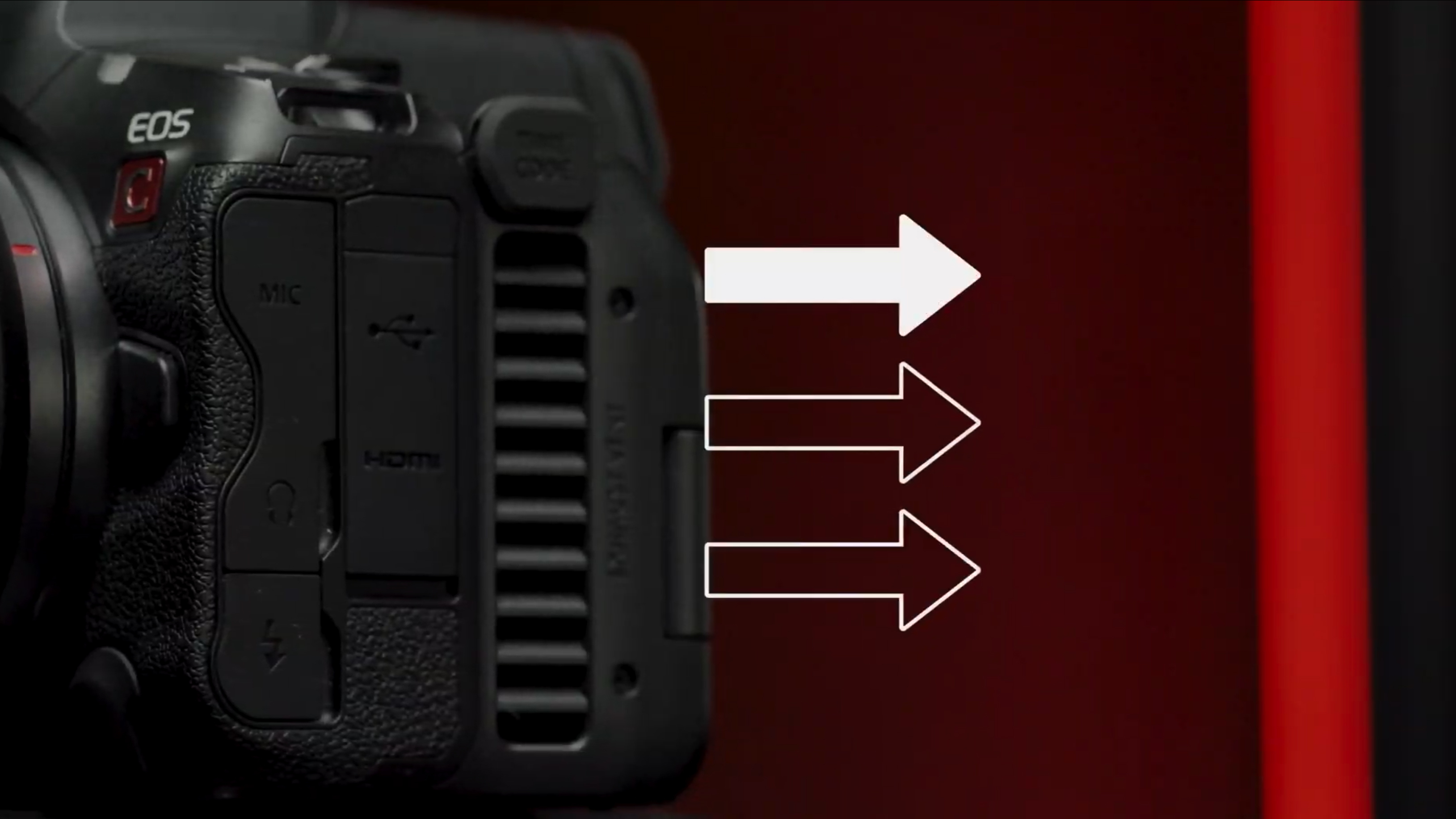
Like the EOS R5, the EOS R5 C can shoot 8K/30p raw video internally – that's pretty impressive for such a small camera. But the difference is that the EOS R5 C has active cooling fans (hence the chubbier look), which means no overheating limits. Hooray!
It shoots 8K DCI with 12-bit color depth at up to 30 frames per second – and if you hook it up to an external power supply, you can even shoot 8K/60p. Does anyone has a spare 2TB memory card?
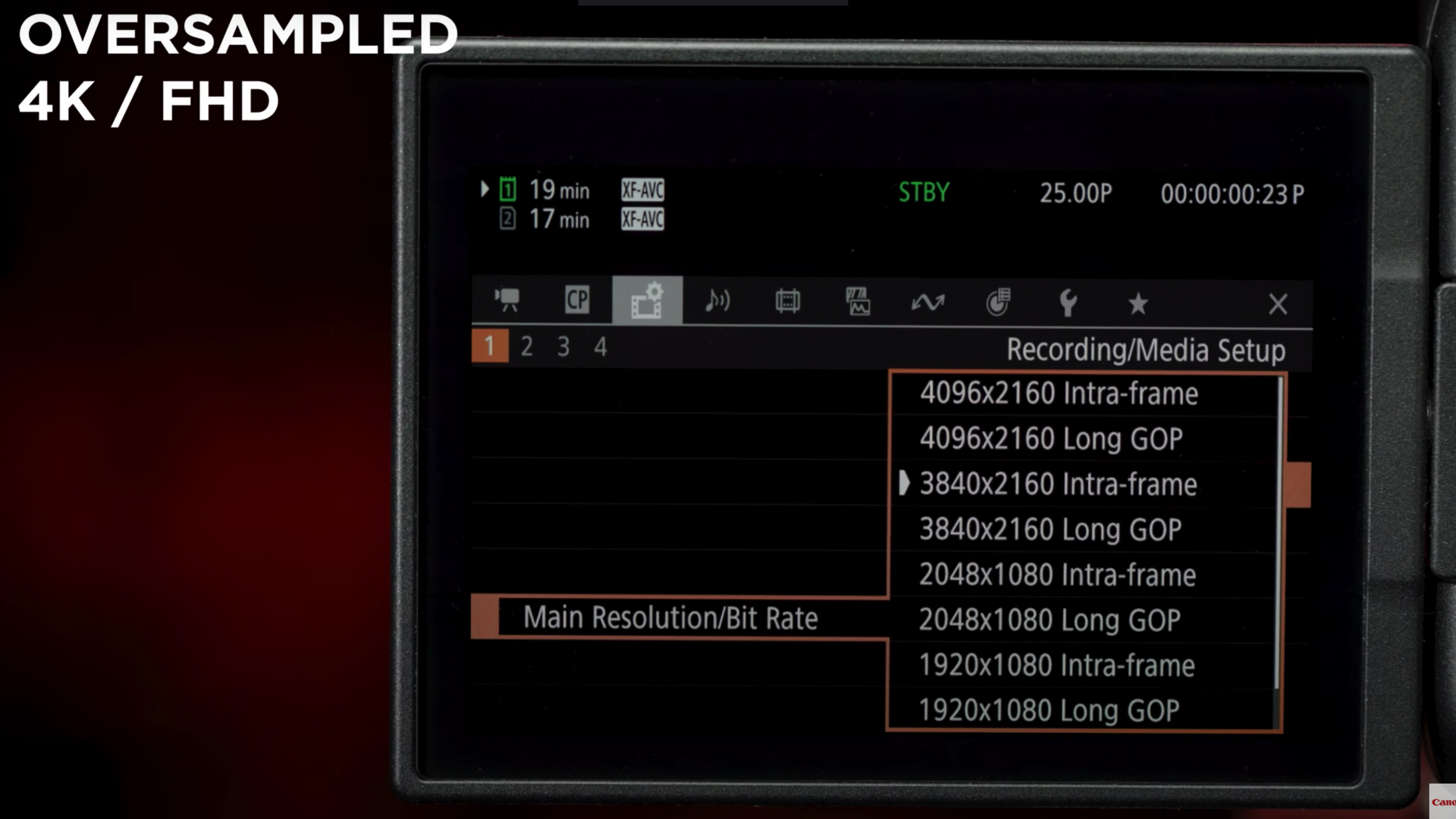
You don't have to shoot 8K to justify getting an EOS R5 C though – its 4K and Full HD video modes are oversampled from the 8K. As Canon says, this should "provide exceptional clarity with low noise".
The slo-mo modes sound impressive, too – you can shoot 4K/120p video with audio, so no need to create a separate recording for that. You get also Dual Pixel CMOS AF and EOS iTR AF X tech, which is the same tracking tech seen on the Canon EOS 1D X Mark III.

Interestingly, Canon is talking up the EOS R5 C's aerial potential when mounted to a drone. It's hard to make out exactly which drone is featured in its video, but unlike Sony, Canon isn't making its own drones (yet).
Still, talk of aerial photography and videography is definitely an attempt to counter Sony's impressive progress with its Airpeak platform, which has been custom-built to work with full-frame mirrorless cameras like the Sony A7S III.

The Canon EOS R5 C has very much been introduced as a Cinema camera, so far – but Canon's also talking up its 45MP stills powers and 20fps burst speed powers and autofocus, which will be the same as the EOS R5.
There's also an interesting 'photo/video' switch on the top-plate and Canon says that the "familiar design and ergonomics of the EOS R5 and EOS R6 have proven extremely popular with hybrid shooters". The EOS R5 C sees this design "evolve to cater for video creation" and is "our smallest and lightest cinema EOS camera".
We're interested to see how that extra bulk from the cooling fans feels in the hand, though.
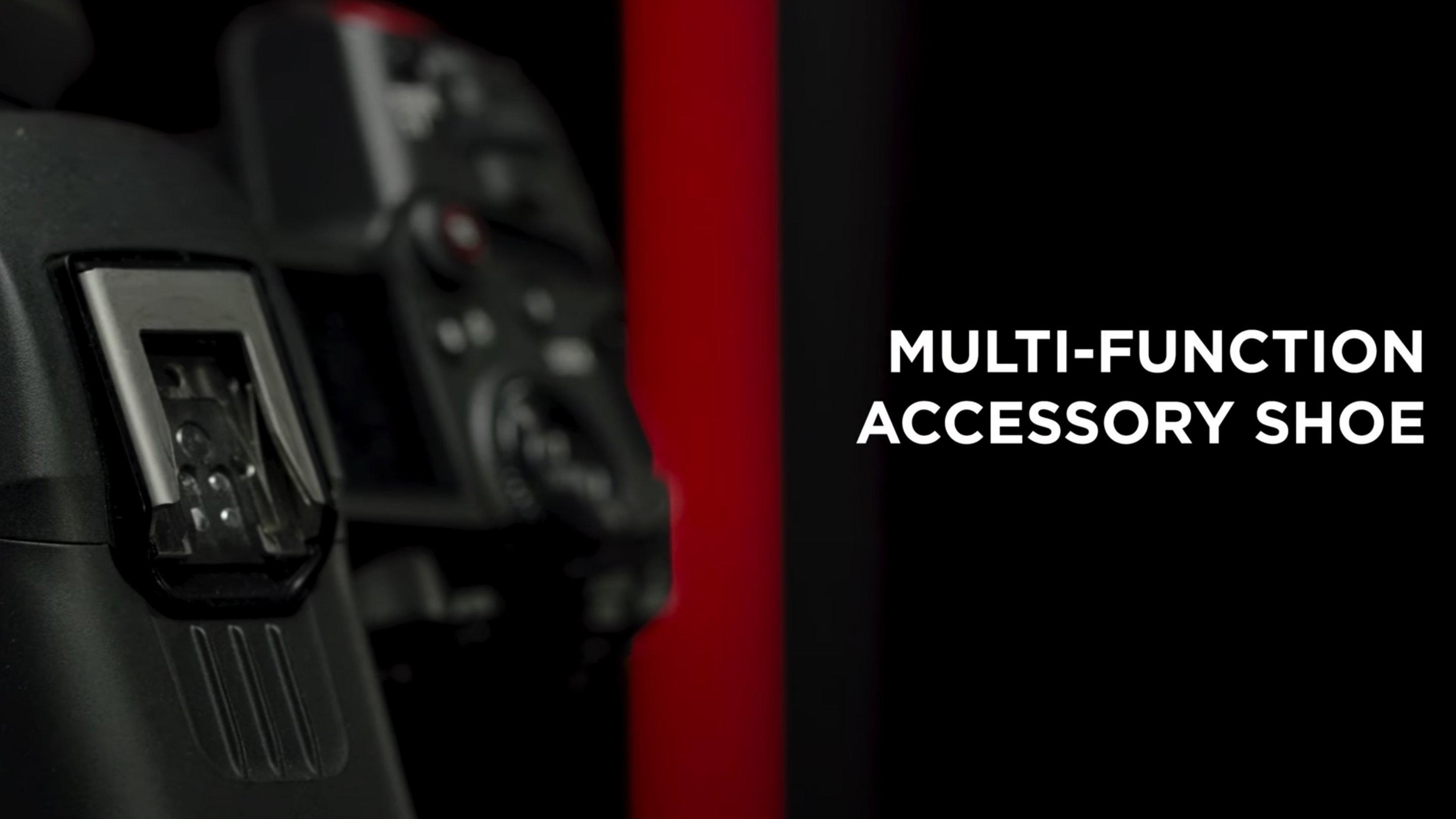
Ah, that's one thing we've been wondering – the EOS R5 C does get the Multi-Function accessory shoe, first seen on the Canon EOS R3.
That's a pretty big bonus over the Canon EOS R5 and means it can power stereo and shotgun microphones without any annoying cables getting in the way.
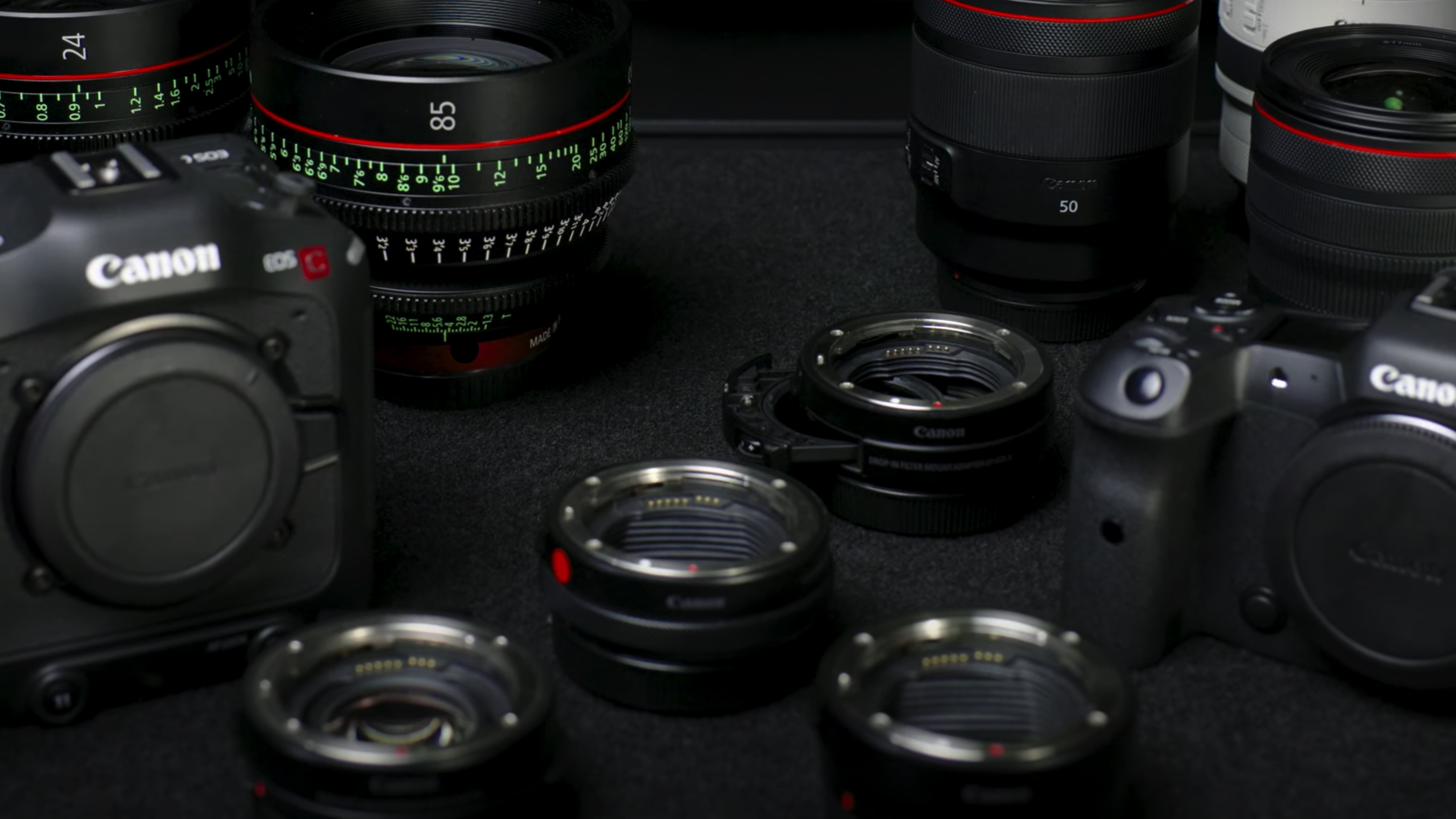
Now the important talk of lenses – it doesn't look like Canon is announcing any new Cinema-focused RF lenses, which is a slight shame. Instead, it's talking up the ability to adapt existing EF Cinema lenses using the EF-EOS R adapter.
Some RF-mount equivalents of those EF lenses have rumored for quite a while, but the RF-mount certainly has some excellent video options with de-clicked focus and control rings, which are essential for changing your settings quietly.
The launch of the EOS R5 C will surely see more Cinema-style lenses launched in the near future, though.
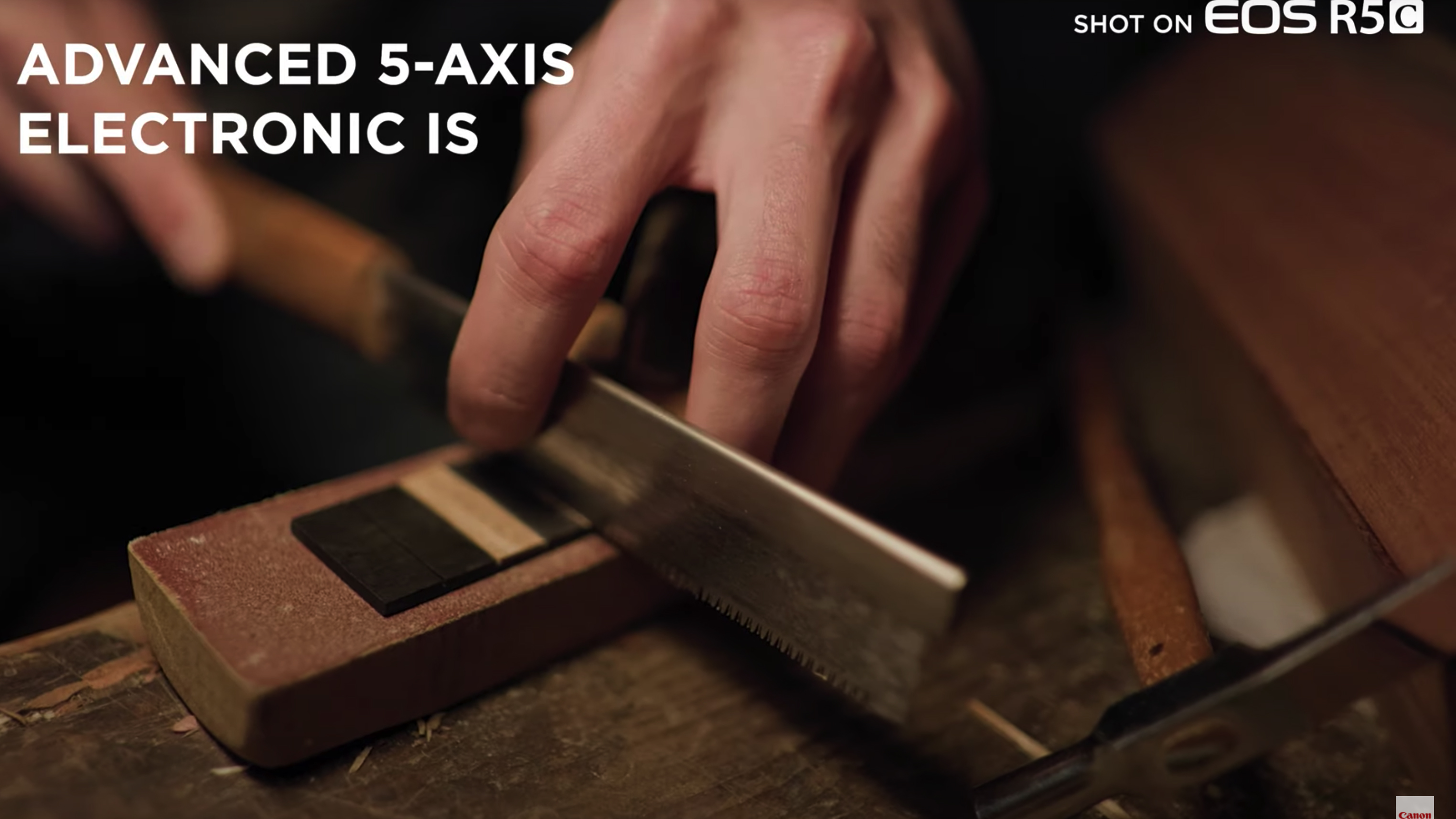
Here's an interesting detail – Canon says the EOS R5 C has "advanced 5-axis electronic IS", but there's no mention of in-body image stabilization (IBIS), which mechanically stabilizes the sensor.
A controversial omission? The EOS R5 has IBIS and it's a very useful tool for photography. But realistically, pro video shooters will always go for their own superior stabilization (like a gimbal or a monopod) over IBIS. And IBIS can even be a disadvantage, introducing a wobble effect to video – so it'd be no major loss for the EOS R5 C's intended audience.

And as if to defend the lack of IBIS, Canon also mentions that its existing Cinema cameras – the C500 Mark II, C300 Mark III and EOS C70 – all use the same 'advanced 5-axis electronic IS' as you'll find in the EOS R5 C.
Canon says this "seamlessly works alongside stabilized and non-stabilized lenses" when shooting handheld, or when the camera isn't mounted on a tripod, gimbal or drone. But realistically, the EOS R5 C is going to spend most of its life in or on one of those three things.
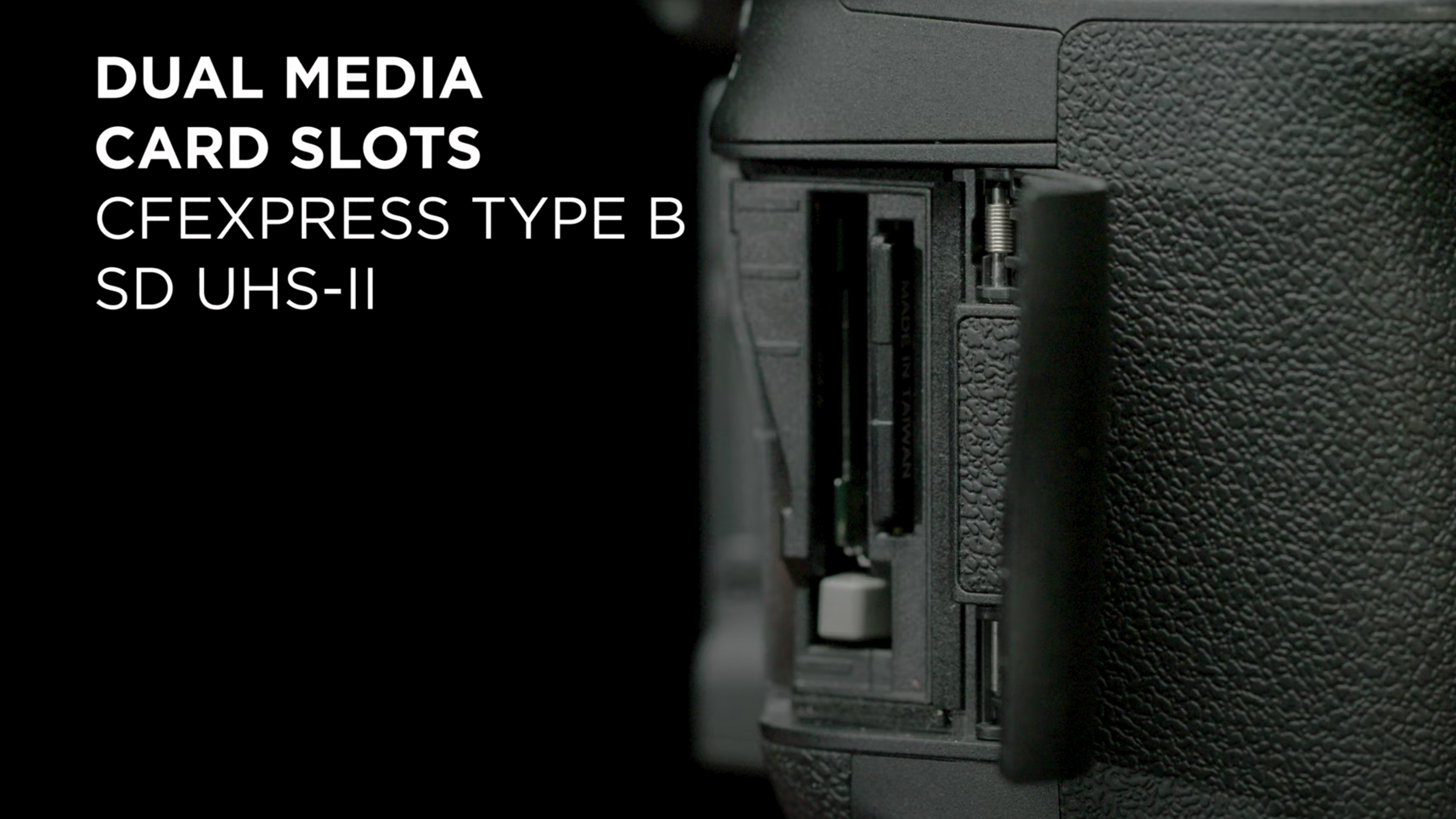
Because the EOS R5 C is built around the same chassis as the EOS R5, it has the same card slots – one for speedy (and pricey) CFexpress cards, and the other for more standard SD UHS-II cards.
You'll need a big CFexpress card for recording 8K footage, but the SD card slot maxes can't swallow that kind of data. Canon says the EOS R5 C provides "sophisticated simultaneous recording options" for storing different resolutions, formats and bit-depths on each card. But you'll likely have to live without a full-res backup if you're shooting in 8K.

A highly enthusiastic ukulele player is on hand to demonstrate the benefits of the EOS R5 C's new Dual Base ISO feature (a first for Canon), which "allows for expanded sensitivity and minimal noise when shooting in low-light environments".
This could be a pretty useful feature – it's different from the Canon EOS C70's Dual Gain output, instead letting the EOS R5 C shoot natively at two different ISOs values, depending on which format you're shooting in. But if you regularly shoot at, for example ISO 1600 or ISO 3200, it could be bonus over the EOS R5.
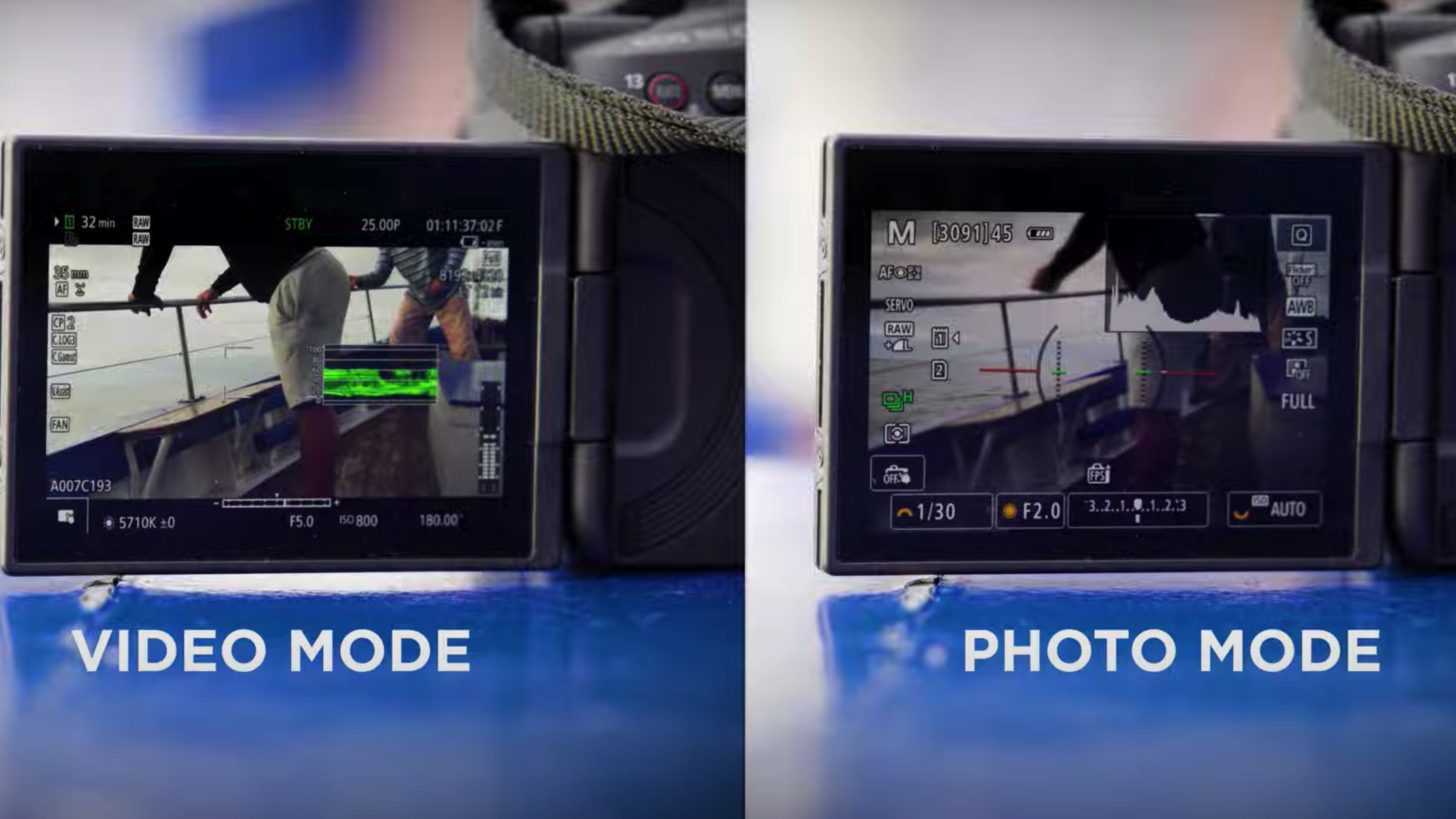
And that's pretty much it from the Canon EOS R5 C announcement. The camera giant says the camera "merges the worlds of Cinema EOS and the EOS R system into one", and it's hard to disagree.
The handy shot above in particular shows how the EOS R5 C looks in both photo mode and video mode, although it's unusual to see those so rigidly delineated. Still, the prospect of having two cameras in one, from both the Cinema EOS and EOS R range, will be a tempting one for pro video shooters, even if that does come with a few practical limitations.
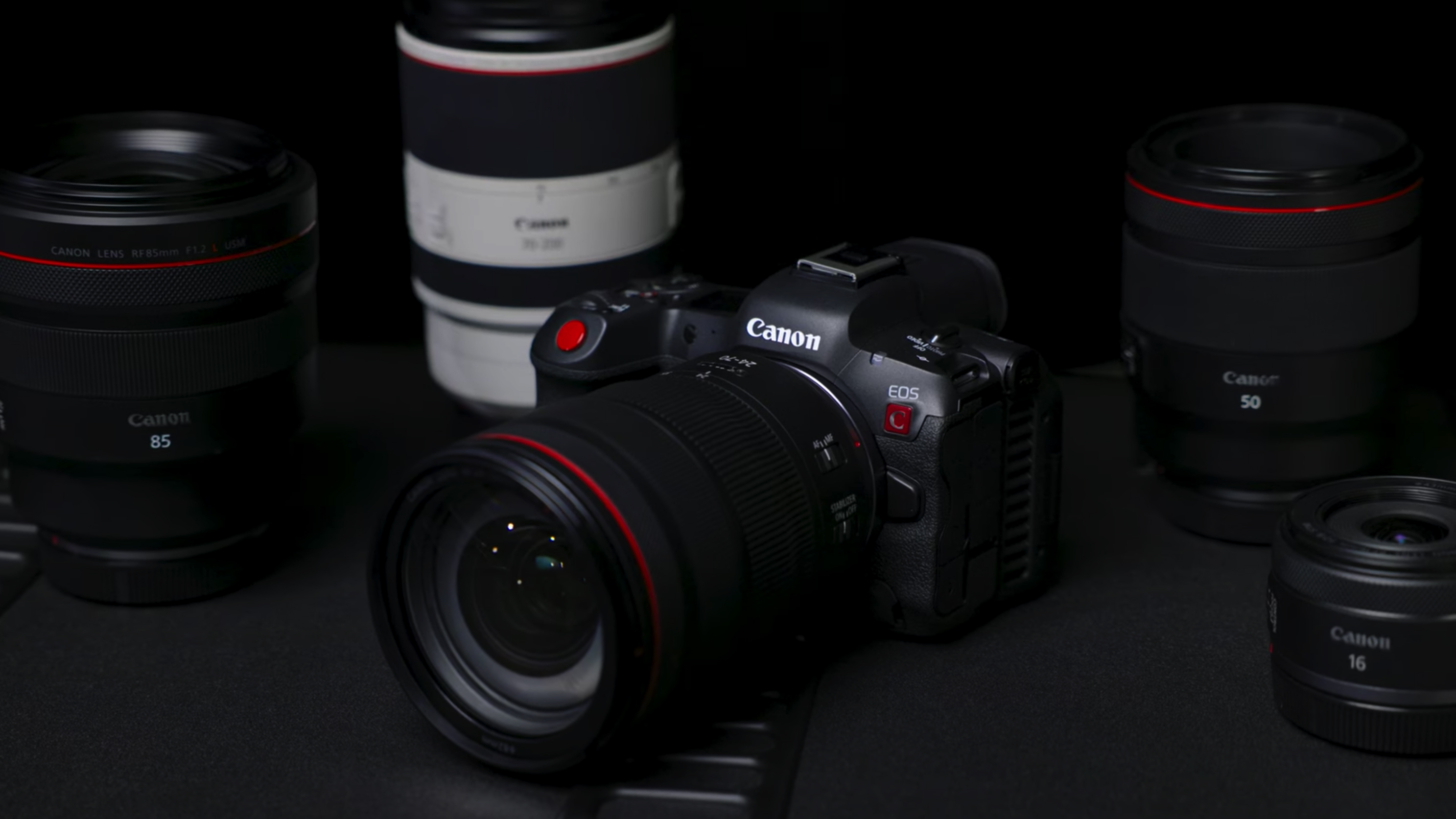
Oh, and what about price? Canon neglected to mention that in its announcement, but we've separately discovered that it'll be available in March for $4,499 / £4,499 / AU$7,499.
That's actually a pretty good price for what if offers, placing it in between the Canon EOS R5 and Canon EOS C70. It's a fair bit pricier than the Sony FX3, though, which lacks 8K video powers but came in at $3,899 / £4,200.
One thing's for sure, though – if you need a small, powerful hybrid camera that majors in pro-level video, there have never been as many options as there are now.
With the Canon EOS R5 C announcement now over, Canon has punted out some promo videos to give us a better idea of what it's like in the field.
Kevin Clerc, a French professional filmmaker and drone pilot, has been one of the few to shoot with the R5 C, and in the video above says that one of the highlights has been that it "really feels like two cameras".
That means handy tools like waveforms in video mode, as opposed to photo-style histograms. That approach could divide opinion, but pro filmmakers will definitely prefer it to the EOS R5.
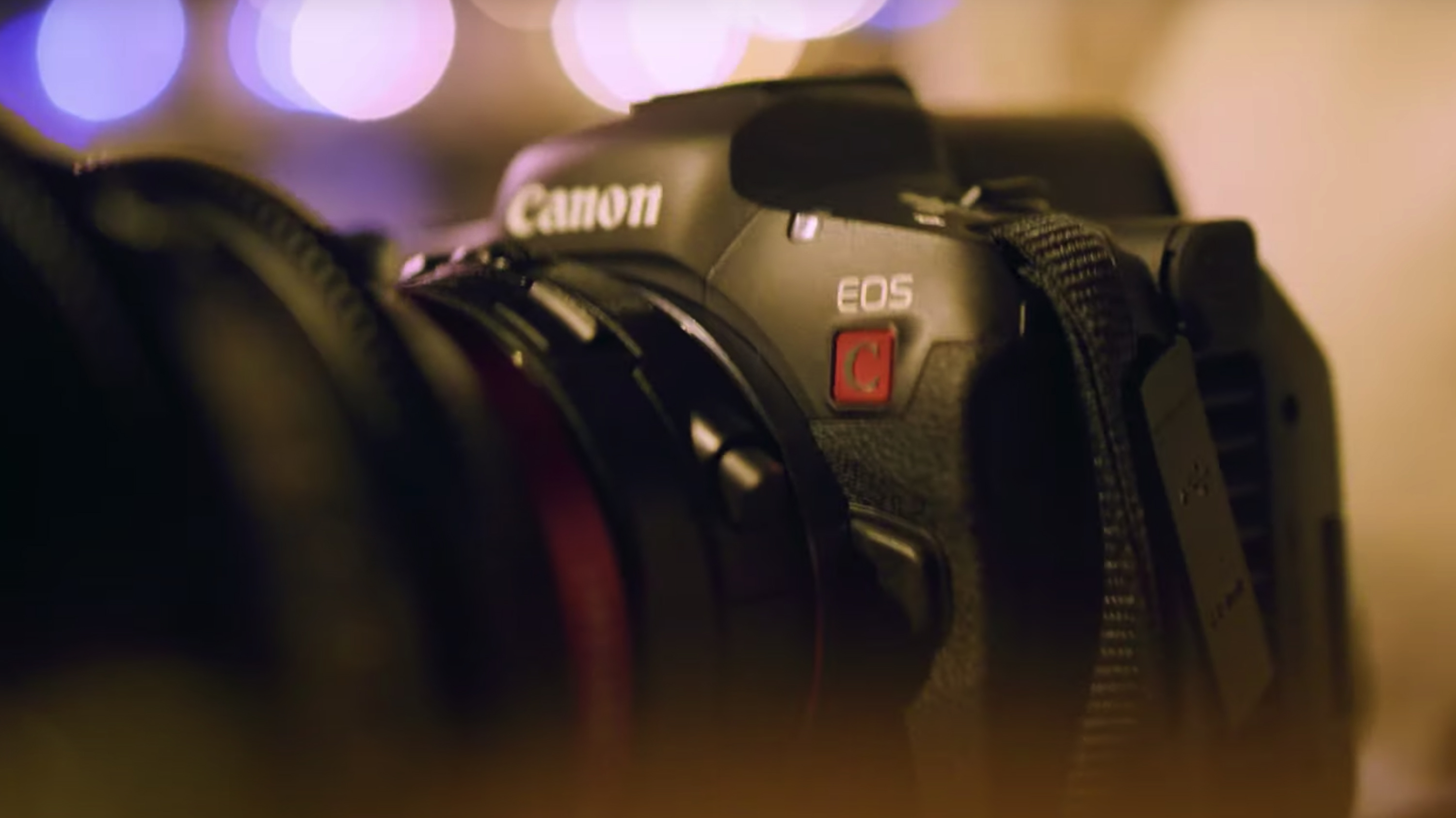
So what are our early thoughts on the Canon EOS R5 C? We haven't been able to get our hands on one yet, but it's definitely a fascinating blend of a Cinema EOS and EOS R camera.
Or perhaps 'blend' isn't quite the right word – it's more like two cameras bolted together, with the option of using two completely different interfaces and feature sets, whether you're in photo or video mode.
That's a different approach to the likes of the Sony A1, but we're looking forward to seeing how well it works in practice. Certainly, the idea of getting a 'pure' Cinema EOS experience on a small mirrorless camera, rather a compromised photo-centric one, will appeal to filmmakers. Photographers will still be better off with the EOS R5, though.
If anything, the EOS R5 C confirms that it simply isn't possible to make one camera to rule them all – instead, you either choose between photo-centric features (like in-body image stabilization) on the EOS R5, or you'll go for the active cooling of the EOS R5 C.
For a full rundown of our early thoughts on the EOS R5 C, check our out Canon EOS R5 C news story – and we'll hopefully bring you our hands-on thoughts very soon.

We've been mulling over yesterday's big Canon EOS R5 C launch – and while it's a powerful hybrid camera, it hasn't left us any less convinced that there's still room for a Canon EOS R1 flagship (possibly later this year, if the rumors are true).
Canon's new hybrid is shaping up to be a fine alternative to the EOS C70 for filmmakers, but here are our thoughts on why the Canon EOS R5 C leaves a convenient gap for a flagship Canon EOS R1.